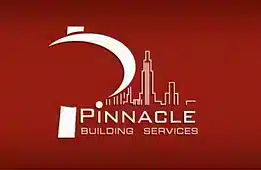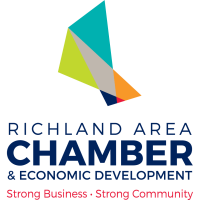A company is only as good as its employees – which means that their safety and well-being are paramount. In today’s world, where threats can come in many forms (from physical break-ins and theft to cyber-attacks and data breaches), robust facility security is more important than ever. It follows that understanding and implementing effective facility security measures should be a top priority for any facility manager – so why wait? Continue reading to explore the many ins and outs of facility security!
Understanding Facility Security
Facility security refers to the measures and defenses put in place to protect a physical space, such as a building or complex, and the people and assets within it. It involves a wide range of activities that ensure protection against potential threats or risks.
The scope of facility security is broad and multifaceted. It includes, but is not limited to:
- Physical Security: This involves securing the premises through means like surveillance cameras, security personnel, access control systems, perimeter fencing, and more.
- Asset Protection: Keeping tangible and intangible assets safe, including machinery, inventory, data centers, and intellectual property.
- Personnel Security: Ensuring the safety of all individuals within the facility – employees, visitors, contractors, etc.
- Emergency Preparedness: Establishing plans and procedures for dealing with emergencies like fires, natural disasters, or active shooter situations.
- Cybersecurity: Protecting digital assets and systems from threats like hacking, data breaches, and other forms of cyber-attacks.
- Compliance: Adhering to regulations and standards related to security and safety.
In essence, facility security aims to create a safe and secure environment that promotes productivity and peace of mind for everyone involved.
Essential Tips for Facility Security
Implementing a robust facility security system requires careful planning and strategic thinking. Here are some essential tips to enhance facility security:
- Conduct Regular Risk Assessments: Identify potential threats and vulnerabilities by conducting regular risk assessments. This can help in creating a tailored security plan.
- Establish Clear Security Policies and Procedures: Develop comprehensive security policies and procedures that cover every aspect of facility security, from access control to emergency response.
- Educate and Train Staff: All staff members should be aware of the security policies and know how to respond in case of an emergency. Regular training sessions can help ensure everyone is up-to-date on the latest protocols.
- Implement Access Control Systems: Control who can access your facility with systems such as key cards, biometrics, or code entries. This can prevent unauthorized entry and keep track of who is in the building at any given time.
- Install Surveillance Systems: Video surveillance can deter potential criminals and provide valuable evidence in case of an incident.
- Secure the Perimeter: Use fences, gates, lighting, and landscaping to deter intruders and make it easier to spot suspicious activity.
- Regularly Update and Test Systems: Security technologies evolve quickly, so it’s important to regularly update systems and conduct tests to ensure they’re working properly.
- Prepare for Emergencies: Have a well-defined emergency response plan in place, and conduct regular drills to ensure everyone knows what to do in case of an emergency.
- Cybersecurity Measures: Employ firewalls, secure networks, and encryption to protect your digital assets. Also, enforce strong password policies and keep software up-to-date.
- Liaise with Local Law Enforcement: Establish a relationship with local law enforcement agencies. They can provide valuable advice and support in enhancing your facility’s security.
Technologies to Enhance Facility Security
In the digital age, technology plays a key role in enhancing facility security. Here are some technologies that can greatly improve the safety and security of a facility:
- Video Surveillance Systems: As mentioned previously, video surveillance is a wise precaution. CCTV cameras provide real-time monitoring of a facility, helping to deter criminal activity and providing vital evidence when needed.
- Access Control Systems: These systems restrict access to certain areas of a facility. They can range from traditional lock-and-key systems to more advanced biometric systems that use fingerprints, facial recognition, or iris scans.
- Intrusion Detection Systems: These systems can detect unauthorized access or activities in a facility, alerting security personnel to potential threats.
- Alarm Systems: Alarm systems can be triggered in case of an emergency or a security breach, alerting all occupants and local law enforcement.
- Security Lighting: Proper lighting can deter criminals and make it easier for surveillance systems to capture clear footage.
- Cybersecurity Software: This includes firewalls, antivirus software, and encryption tools to protect a facility’s digital assets from cyber threats.
- Radio Frequency Identification (RFID) Tags: These can be used to track equipment and inventory, preventing theft and misplacement.
- Visitor Management Systems: These systems keep track of all visitors entering and leaving the facility, improving security and accountability.
- Emergency Communication Systems: These systems allow for quick and efficient communication in the event of an emergency, ensuring everyone is informed and can take appropriate action.
- Drones: For large facilities, drones can be used for aerial surveillance, providing a broader view of the premises and identifying potential threats more quickly.
Remember, technology alone cannot guarantee security. It should be used in conjunction with solid security policies and procedures, regular staff training, and frequent system checks and updates.
The Role of Facilities Managers in Security
Facilities managers play an integral role in maintaining and enhancing the security of a facility. Their responsibilities often include:
- Overseeing Security Measures: Facilities managers are typically responsible for implementing and managing all security measures, which can range from physical security like CCTV cameras and alarm systems to cybersecurity measures.
- Conducting Risk Assessments: They carry out regular risk assessments to identify potential vulnerabilities and develop strategies to mitigate these risks.
- Developing and Implementing Policies and Procedures: Facilities managers create comprehensive security policies and procedures that align with organizational goals and regulatory requirements.
- Training Staff: They organize training sessions for employees to ensure they understand the security protocols and know how to respond in case of an emergency.
- Liaising with Security Personnel and Other Stakeholders: Facilities managers often work closely with security personnel, law enforcement agencies, and other stakeholders to enhance the security of the facility.
- Staying Up-to-Date with Latest Security Technologies and Trends: The field of security is constantly evolving, so facilities managers must keep up with the latest technologies and trends to ensure their security measures remain effective.
- Emergency Planning: Facilities managers are often responsible for developing and implementing emergency response plans, including conducting regular drills.
- Maintenance of Security Systems: They ensure that all security equipment and systems are well-maintained and updated as needed.
In essence, the facilities manager is the cornerstone of a facility’s security, ensuring a safe and secure environment for all occupants.
In the end, enhancing security protocols is not a one-time effort but an ongoing process. It requires staying informed about the latest trends and best practices, regularly reviewing and updating your strategies, and fostering a culture of security awareness within your organization. Your efforts make a difference for the entire facility – solways remember: Safety first!




